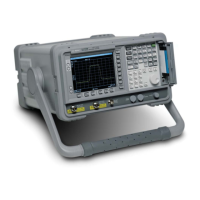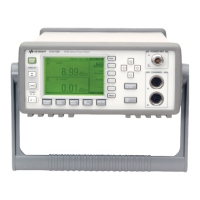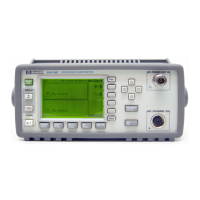46 Chapter 3
Making a Basic Measurement
Viewing a Signal
Improving Frequency Accuracy
9. While not all of the zeros following the decimal in the active function block are significant, the
numbers after the decimal in the marker annotation (upper-right corner of screen) are significant.
To improve the accuracy of the frequency reading in the marker annotation, turn on the frequency
count function by pressing
Freq Count.
10.Note softkey
Marker Count On Off. If Off is underlined, press the softkey to toggle marker count
on.
As shown in Figure 3-5:
• The marker annotation changes from Mkr1 to Cntr1.
• The displayed resolution in the marker annotation improves.
NOTE When you use the frequency count function, if the ratio of the resolution
bandwidth to the span is less than 0.002, the following message appears on the
display: Marker Count: Widen Res BW
This indicates that the resolution bandwidth is too narrow.
11.Press
Marker ➞, Mkr ➞ CF to move the 10 MHz peak to the center of the display.
Valid Marker Count Range
12.Move the marker down the skirt of the 10 MHz peak. Note that although the readout in the active
function changes, as long as the marker is at least 26 dB above the noise, the counted value
(upper-right corner of display) does not change (see Figure 3-6). For an accurate count, the marker
does not have to be at the exact peak.
NOTE Marker count functions properly only on CW signals or discrete peaks. For a valid
reading, the marker must be 26 dB above the noise.
13.Press
BW/Avg, Res BW, then enter a new value. This action makes the resolution bandwidth the
active function and allows you to experiment with different resolution bandwidth (RBW) values.
14.Press
Marker, Off to turn the marker off.
NOTE After properly setting the analyzer to display your signal, you can save the settings
as either a user preset (press
System, Power On/Preset, Save User Preset), or a
file (see “Saving a File” on page 55).
